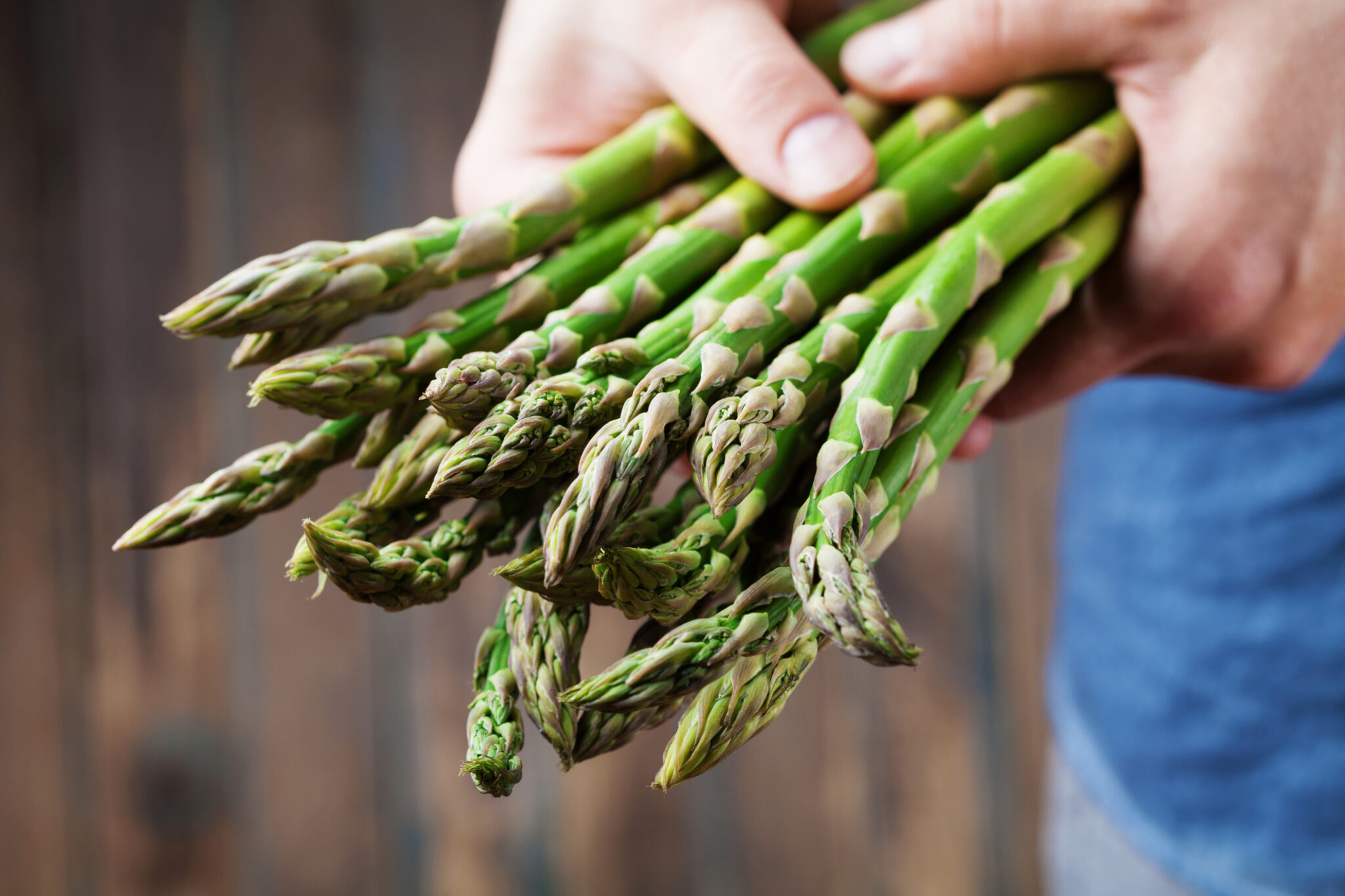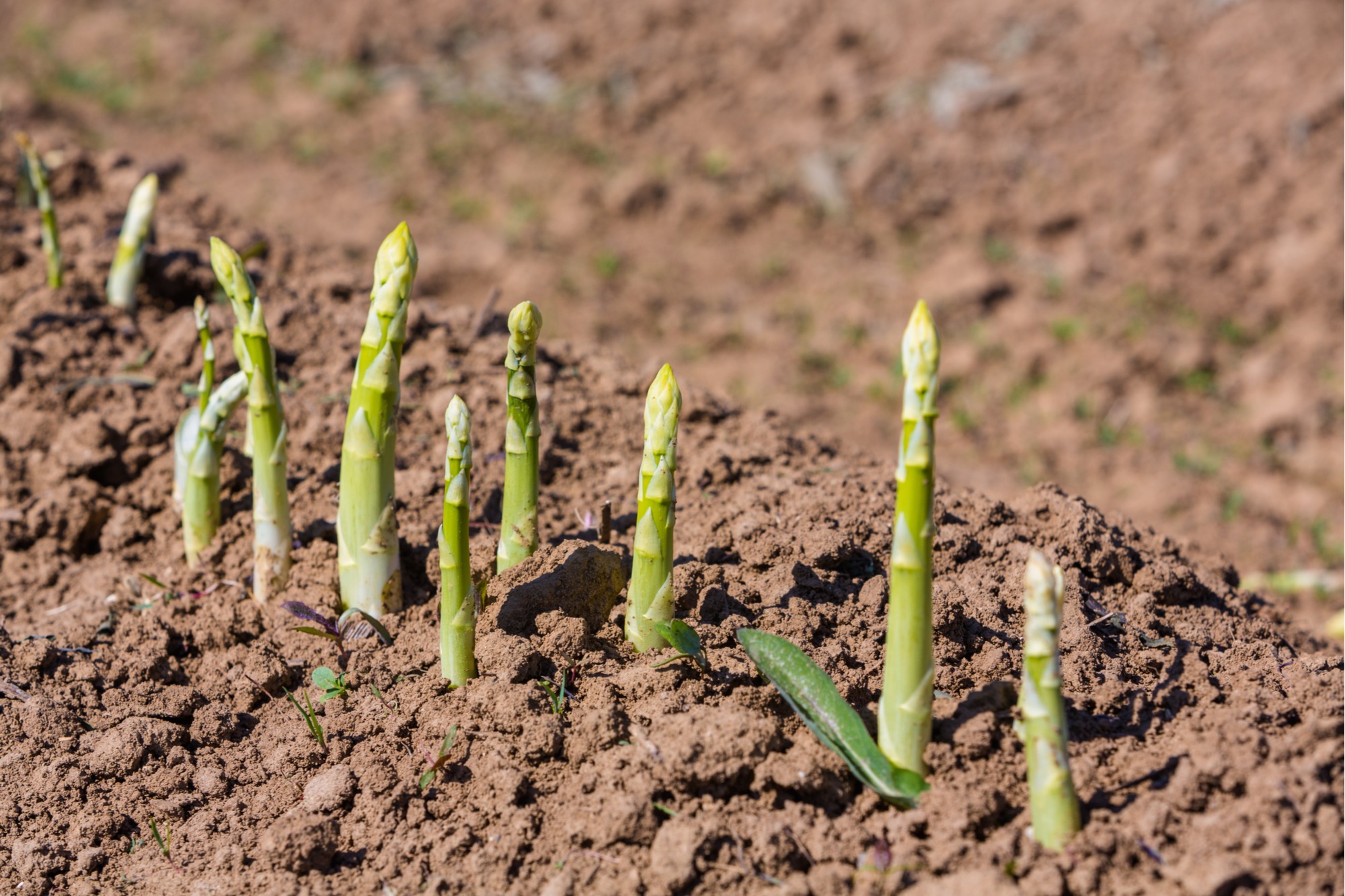The Joy of Growing Your Own Asparagus: An Overview
Cultivating asparagus in your garden brings immense satisfaction, as you nurture and harvest these versatile, nutrient-rich spears. Asparagus gardening know-how is essential for success, as these plants have unique needs and characteristics that distinguish them from other garden vegetables. Rich in history, asparagus (Asparagus officinalis) has been cultivated for over 2,000 years, gracing tables with its delicate flavor and impressive nutritional profile. By understanding the fundamentals of asparagus gardening, you can enjoy a thriving patch that yields delicious, organic produce for years to come.
Choosing the Perfect Asparagus Variety: A Few Top Picks
Selecting the ideal asparagus variety is a crucial step in your asparagus gardening know-how journey. Numerous options cater to various preferences, climates, and garden spaces. Among the most popular selections are Jersey Knight, Purple Passion, and Mary Washington. Each variety boasts unique features and advantages, making it essential to understand their growing conditions and compatibility with your garden.
Jersey Knight, a favorite among gardeners, is a reliable, high-yielding variety with all-male plants that produce thick, tender spears. Its vigorous growth and disease resistance make it an excellent choice for both home gardens and commercial production. Jersey Knight thrives in various soil types and climates, ensuring a bountiful harvest from spring to early summer.
Purple Passion, as its name suggests, boasts striking purple spears that add visual appeal to any garden. This unique variety is slightly sweeter and more tender than green asparagus, making it a delightful addition to culinary creations. With a semi-upright growth habit, Purple Passion is well-suited for raised beds and smaller gardens. However, it may require slightly more attention to pH levels, as it prefers a slightly acidic soil (6.0 to 6.5).
Mary Washington, a classic heirloom variety, is renowned for its productivity and hardiness. Its bright green spears are slightly thinner than Jersey Knight but equally delicious and tender. Mary Washington is adaptable to various soil types and climates, making it a versatile choice for home gardeners. Its upright growth habit and moderate spread make it suitable for both in-ground and raised bed planting.
When choosing the perfect asparagus variety, consider factors such as local climate, garden space, and personal preferences. By selecting a variety that aligns with your unique growing conditions, you can maximize your asparagus gardening success and enjoy a thriving, productive patch for years to come.
Preparing the Soil: A Crucial Step for Asparagus Gardening Success
Proper soil preparation is a critical aspect of asparagus gardening know-how, setting the foundation for a thriving, productive patch. Asparagus plants require well-draining, fertile soil with a slightly alkaline pH (ideally between 6.5 and 7.5) to flourish. By testing your soil and amending it with organic matter, you can create the perfect environment for your asparagus plants to establish and prosper.
Begin by testing your soil pH using a home testing kit or sending a sample to a local extension service. If your soil pH is below 6.5, consider adding lime to raise it; if it’s above 7.5, add elemental sulfur to lower it. Adjusting the pH level may take several months, so plan accordingly.
Next, focus on improving soil drainage and fertility. Incorporate organic matter, such as compost, well-rotted manure, or peat moss, into the top 12 inches of soil. These amendments enhance soil structure, promote water retention, and introduce beneficial microorganisms that support healthy plant growth. Aim for a soil composition of approximately 50% mineral and 50% organic matter.
When preparing the soil for asparagus, avoid compacting the soil or walking on it, as this can hinder root development and water infiltration. Instead, create raised beds or wide, shallow trenches to accommodate the asparagus crowns. This approach ensures adequate soil depth and drainage, which are essential for healthy asparagus growth.
Planting Asparagus: A Step-by-Step Guide
Planting asparagus crowns is a rewarding experience that sets the foundation for a productive, long-lasting patch. By following a few essential steps, you can ensure a successful asparagus gardening know-how journey. Proper spacing, depth, and soil coverage recommendations are crucial for the young asparagus plants‘ care.
- Choose healthy asparagus crowns: Purchase one-year-old asparagus crowns from a reputable supplier, ensuring they are healthy and disease-free. Store them in a cool, dark place until you’re ready to plant, but avoid prolonged storage, as this can negatively impact plant vigor.
- Prepare the soil: Soil preparation plays a vital role in asparagus gardening success. Test the soil pH, aiming for a balanced level between 6.5 and 7.5. Amend the soil with organic matter, such as compost, well-rotted manure, or peat moss, to improve drainage and fertility. Create raised beds or wide, shallow trenches for the asparagus crowns, spacing them 12 to 18 inches apart in rows that are 3 to 5 feet apart.
- Plant the crowns: Place the asparagus crowns in the prepared trenches, ensuring the roots are spread out evenly. Gently cover the crowns with 2 to 3 inches of soil, then water thoroughly. As the spears emerge, gradually fill in the trenches with additional soil, reaching the final soil level approximately 6 to 8 weeks after planting.
- Care for young asparagus plants: Keep the soil consistently moist during the first growing season, applying a 2- to 3-inch layer of mulch to conserve moisture and suppress weeds. Refrain from harvesting spears during the first two to three years, allowing the plants to establish deep, robust root systems. Remove any weeds manually, taking care not to disturb the asparagus roots.
By following these steps, you can establish a thriving asparagus patch that will provide you with delicious, organic spears for years to come. Understanding the unique needs and characteristics of asparagus plants is essential for a successful asparagus gardening know-how experience.
Harvesting Asparagus: Patience and Timing are Key
Harvesting asparagus spears is an exciting milestone in asparagus gardening know-how. However, patience and timing are crucial to ensure the plants establish themselves properly during the first two to three years. By understanding when and how to harvest asparagus spears, you can maximize your yield and enjoy the delicious fruits of your labor.
When to harvest asparagus:
Asparagus spears should be allowed to grow to at least 6 to 10 inches tall before harvesting. In the first year, avoid harvesting any spears to give the plants time to develop strong root systems. During the second year, harvest for a brief period, such as two weeks, to avoid weakening the plants. In the third year, you can extend the harvesting period to four to six weeks.
How to harvest asparagus:
To harvest asparagus, gently grasp the spear near the base and snap or cut it off just below the soil surface. Use a sharp knife or pruning shears to avoid damaging the remaining spears or the root system. After harvesting, remove any debris or cuttings from the patch to prevent the spread of pests or diseases.
Storing and preparing freshly harvested asparagus:
Freshly harvested asparagus should be refrigerated immediately to maintain its quality. Wrap the spears in damp paper towels and place them in a plastic bag before storing them in the crisper drawer. Asparagus can be stored this way for up to one week. Before preparing asparagus, rinse it under cold water to remove any dirt or debris. Snap off the woody ends and, if desired, peel the lower portion of the spears for a more tender texture.
By following these guidelines, you can ensure a successful asparagus harvest and enjoy your homegrown asparagus spears in various delicious dishes.
Maintaining a Healthy Asparagus Patch: Tips and Tricks
Maintaining a healthy asparagus patch is essential for a successful asparagus gardening know-how experience. Proper care, including regular watering, fertilizing, and mulching schedules, helps ensure a bountiful harvest and long-lasting plants. Additionally, being aware of common pests and diseases, such as asparagus beetles and fusarium wilt, can help you address issues promptly and effectively.
Watering, fertilizing, and mulching:
Asparagus plants require consistent moisture, especially during the growing season. Water your asparagus patch regularly, aiming for about 1 to 1.5 inches of water per week. Incorporate a layer of mulch, such as straw or wood chips, to conserve moisture and suppress weeds. Apply a balanced fertilizer, such as a 10-10-10 NPK formula, in the spring, following package instructions. Fertilize again in the fall if your soil test indicates a need for additional nutrients.
Common pests and diseases:
Asparagus beetles are a common pest that can damage asparagus spears and foliage. Handpick adult beetles and larvae or use insecticidal soap to control infestations. Fusarium wilt is a soilborne fungal disease that can cause yellowing and wilting of asparagus plants. To manage fusarium wilt, practice crop rotation, maintain good soil drainage, and avoid working in wet soil. If the disease is severe, consider removing and replacing the affected soil.
By following these tips and tricks, you can maintain a healthy asparagus patch and enjoy the rewards of your asparagus gardening know-how for many years to come.
Extending the Asparagus Growing Season: Techniques and Strategies
Extending the asparagus growing season allows you to enjoy fresh, homegrown asparagus for a more extended period. Various techniques and strategies, such as using row covers, cold frames, or raised beds, can help you maximize your harvest. Understanding the benefits and drawbacks of each method can help you select the best approach for your garden.
Row covers:
Row covers are lightweight, transparent materials that can be placed over asparagus plants to protect them from frost and extend the growing season. Row covers trap heat, creating a microclimate that promotes earlier growth in the spring and later growth in the fall. They are easy to install, remove, and reuse, making them a versatile and cost-effective option for asparagus gardeners. However, row covers may require additional support to prevent them from collapsing under heavy snow or wind.
Cold frames:
Cold frames are small, enclosed structures with transparent tops that create a warm, protected environment for asparagus plants. They can be used to start asparagus crowns indoors during the winter months or to extend the growing season in the spring and fall. Cold frames can be constructed from various materials, such as wood, brick, or concrete blocks, and can be customized to fit your garden space. While cold frames offer excellent insulation and frost protection, they may require additional ventilation during warm, sunny weather to prevent overheating.
Raised beds:
Raised beds are elevated garden beds that offer improved drainage, soil warmth, and easier maintenance compared to traditional in-ground gardening. By planting asparagus in raised beds, you can create a warmer, well-draining environment that promotes earlier and later growth. Raised beds can be constructed from various materials, such as wood, stone, or metal, and can be customized to fit your garden space and aesthetic preferences. However, raised beds may require more frequent watering and fertilization due to their improved drainage and increased exposure to wind and sunlight.
By implementing these techniques and strategies, you can extend your asparagus growing season and enjoy the fruits of your labor for a more extended period. Remember to consider the unique benefits and drawbacks of each method to determine the best approach for your garden and local climate.
Enjoying the Fruits of Your Labor: Delicious Asparagus Recipes
Congratulations on mastering asparagus gardening know-how and cultivating your very own homegrown asparagus! Now it’s time to savor the fruits of your labor with some delicious asparagus recipes. Here, we share classic dishes that showcase the unique flavor and versatility of fresh asparagus, encouraging you to enjoy your bountiful harvest in style.
Grilled Asparagus
Grilled asparagus is a simple and elegant way to prepare fresh asparagus spears. Toss the spears in olive oil, garlic, salt, and pepper, then grill them over medium heat until tender and slightly charred. Serve with a squeeze of lemon juice and a sprinkle of parmesan cheese for added flavor.
Asparagus Risotto
Asparagus risotto is a creamy and comforting dish that highlights the delicate taste of asparagus. Sauté chopped asparagus in butter until tender, then add Arborio rice, vegetable broth, white wine, and grated parmesan cheese. Cook, stirring constantly, until the rice reaches a creamy consistency. Garnish with fresh herbs and additional cheese before serving.
Asparagus Soup
Asparagus soup is a light and refreshing way to enjoy your homegrown asparagus. Simmer chopped asparagus, leeks, garlic, and vegetable broth until the vegetables are tender. Purée the mixture until smooth, then stir in heavy cream, lemon juice, salt, and pepper. Serve chilled or hot, garnished with fresh herbs and crumbled bacon.
By incorporating these recipes into your meal rotation, you can enjoy the unique taste and nutritional benefits of fresh asparagus while showcasing your asparagus gardening know-how. For more inspiration, explore additional resources that offer creative and innovative ways to prepare and enjoy your homegrown asparagus.




/how-to-plant-and-grow-asparagus-1402814-01-8a911ee605434ccfaebdffa4d435cb32.jpg)

